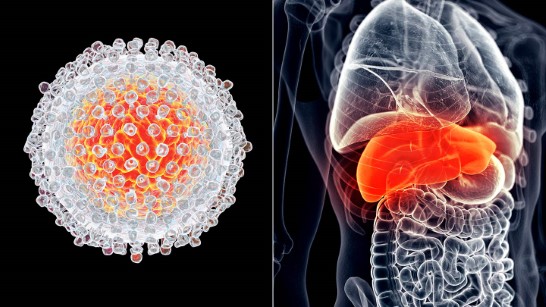Source: Thailand Medical News Oct 29, 2019 5 years, 5 months, 4 weeks, 6 hours, 2 minutes ago
Medical researchers from the Bellvitge Biomedical Research Institute (IDIBELL) in Spain have discovered the critical involvement of a cell membrane protein in the development and progression of
liver cancer.
 Clathrin
Clathrin, the protein is known for its key role in the process of internalization of molecules from the extracellular space into the cell, called endocytosis. In this process, the cell membrane folds creating vesicles with a cladded structure. Through the new findings, analyzing the levels of
clathrin expression in biopsies of hepatocellular carcinoma patients will help select those patients who will benefit from a much more targeted and personalized therapy.
Dr. Isabel Fabregat, team leader and who is a professor at the Faculty of Medicine and Health Sciences of the University of Barcelona and a researcher at the CIBER of Hepatic and Digestive Diseases, has shown that liver cells with invasive features have high levels of
clathrin, a protein whose involvement in
liver cancer was unknown until this study.
The researchers demonstrated that high expression levels of
clathrin correlate with the activation of the pro-tumorigenic pathway of a known hepatic carcinogenesis actor:
TGF-β. In this sense, the work provides completely new and clinically valuable knowledge when it comes to understanding the complex and controversial role of
TGF-β in this type of
liver cancer.
The cytokine
TGF-β has a dual role: in normal conditions, or in early stages of
carcinogenesis, it plays a tumor suppressive role, promoting cell death and reducing tumor growth. But in advanced stages of
liver cancer, where this signaling pathway is highly activated, tumor cells have acquired capabilities to escape its suppressor functions and respond to TGF- β by inducing cell migration and invasion, and thus contributing to tumor spreading.
Past work by the research team had shown that for this change in cellular behavior to take place,
TGF-β activates the EGF receptor pathway (EGFR) in tumor cells, whose overexpression and hyperactivity has been associated with a large number of cancers. The new results have shown that clathrin is essential in the endocytosis of EGFR, a decisive step for the activation of this pathway by
TGF-β. In vitro experiments of this recent work have allowed the IDIBELL researchers to demonstrate that
clathrin<
/span> cell levels determine, via EGFR, the function of TGF-β. If the expression of clathrin is eliminated, the cells die. On the contrary, high levels of clathrin promote the proinvasive and tumorigenic character of the cells. The reason for this effect must be found in the functionality of the EGFR pathway: the elimination of clathrin results in an inhibition of this signaling pathway. Researchers have also shown that TGF-β is capable of inducing clathrin synthesis, ultimately encouraging a self-stimulation loop.
The study also demonstrates that clathrin expression increases during hepatic tumorigenesis both in humans and mice, and its expression changes the response to TGF-β in favor of anti-apoptotic / pro-tumorigenic signals. There is a positive correlation between the expression of TGF-β and clathrin in samples of hepatocellular carcinoma patients. Patients expressing high levels of TGF-β and clathrin showed a worse prognosis and reduced survival.
Dr. Isabel Fabregat commented to Thailand Medical News during a phone interview, "determining the levels of clathrin expression in samples of hepatocellular carcinoma patients can be of great help in selecting those who can be given a therapy based on inhibitors of the TGF- β pathway".
The discovery was published in the Journal of Hepatology.
The discovery of the cellular pathway and the role clathrin expression plays in liver cancer can pave the way for more precision based therapies.
Reference : Clathrin switches Transforming Growth Factor-β role to pro-tumorigenic in liver cancer, Journal Of Hepatology ,Daniel Caballero-Díaz, Esther Bertran,Irene Peñuelas-Haro,Joaquim Moreno-Càceres,, Andrea Malfettone,Judit López-Luque,Annalisa Addante, Blanca Herrera,Aránzazu Sánchez Ania Alay4Xavier Solé4Teresa Serrano,Emilio Ramos,Isabel Fabregat, DOI: https://doi.org/10.1016/j.jhep.2019.09.012
